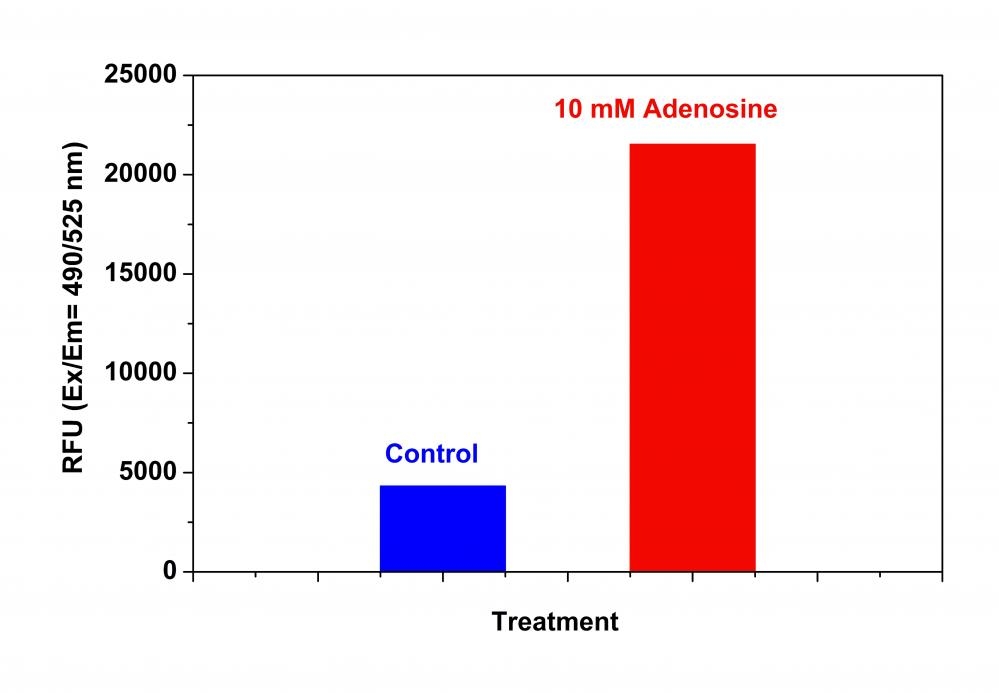Cell Meter™ Caspase 9 Activity Apoptosis Assay Kit
Green Fluorescence
Our Cell Meter™ assay kits are a set of tools for monitoring cellular functions. There are a variety of parameters that can be used. This particular kit is designed to monitor cell apoptosis by measuring caspase 9 activity. Caspase 9 is a member of the CED-3 subfamily. Activated Caspase-9 cleaves downstream caspases such as caspase-3, -6 and -7, initiating the caspase cascade. It is essential for apoptosis during normal development of the central nervous system. Caspase 9 is proven to have selectivity for the peptide sequence Leu-Glu-His-Asp (LEHD). This kit uses (Ac-LEHD)2-R110 as a fluorogenic indicator for caspase 9 activity. Cleavage of R110 peptides by caspase 9 generates strongly fluorescent rhodamine 110 (R110)which is monitored at the emission between 520 nm and 530 nm with the excitation between 480 nm and 500 nm. The kit provides all the essential components. The assay is robust and can be readily adapted for high throughput screening. It can be used to either quantify the activated caspase 9 activities in apoptotic cells or screen the caspase 9 inhibitors. Quite a few labs have used this kit for high throughput screenings.


| Catalog | Size | Price | Quantity |
|---|---|---|---|
| 22799 | 200 Tests | Price |
Spectral properties
| Extinction coefficient (cm -1 M -1) | 80000 |
| Excitation (nm) | 500 |
| Emission (nm) | 522 |
Storage, safety and handling
| H-phrase | H303, H313, H333 |
| Hazard symbol | XN |
| Intended use | Research Use Only (RUO) |
| R-phrase | R20, R21, R22 |
| UNSPSC | 12352200 |
Instrument settings
| Fluorescence microplate reader | |
| Excitation | 490 nm |
| Emission | 525 nm |
| Cutoff | 515 nm |
| Recommended plate | Black wall/clear bottom |
| Instrument specification(s) | Top/Bottom read mode |
Documents
Contact us
| Telephone | |
| Fax | |
| sales@aatbio.com | |
| International | See distributors |
| Bulk request | Inquire |
| Custom size | Inquire |
| Technical Support | Contact us |
| Request quotation | Request |
| Purchase order | Send to sales@aatbio.com |
| Shipping | Standard overnight for United States, inquire for international |
Page updated on December 6, 2025

